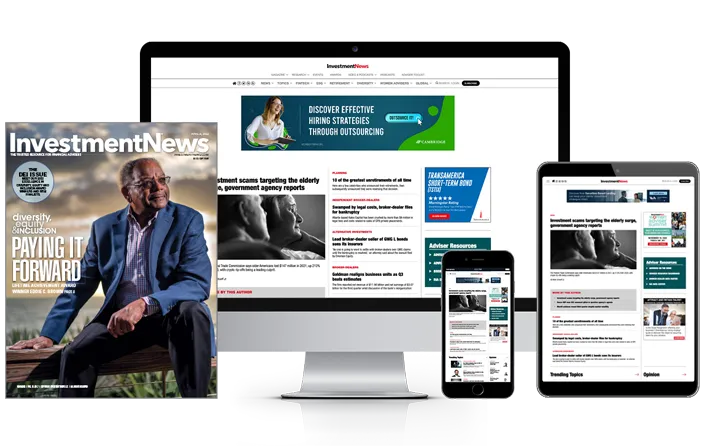

Whatever happened to all those Federal Reserve interest rate cuts Wall Street strategists predicted prior to the start of 2024?
The year is more than half over and we haven’t seen a single cut - let alone the five or more they predicted.
“Honestly, I thought they would have cut by now. I was penciling in a June rate cut at the beginning of this year,” said Matt Eagan, head of the Full Discretion team at Loomis Sayles. “Now, of course, we've got much stronger data through the first quarter, so I penciled that back down to one cut for the remainder of this year.”
“The data is starting to roll over a bit,” added Eagan. “The economy is losing momentum. We're starting to get that in some of the peripheral data. So I think that's going to set the Fed up finally to pull the trigger on the rate cut.”
Okay then, it’s coming sometime in the second half. But what should investors and advisors be doing in the meantime with their fixed income allocations?
In Eagan’s opinion, there’s no reason to hang around at the short end of the yield curve. His advice is to move out on the curve to be safe and lower reinvestment risk – but not too far out.
“I think it's going to be a relatively short or shallow rate cut cycle for the Fed once it gets going, so I think there you want to be in that 5- to 7-year part of the cycle,” said Eagan. “You're going to capture most of the returns that you're going to get in the longer end. So that's kind of the sweet spot.”
As to why investors should not extend duration much further and grab higher rates while they still can, Eagan points to the upcoming presidential election in November which has the potential to add volatility to the long end of the market.
In terms of which types of bonds he likes best, Eagan says he is a fan of corporates, especially in the triple B area, due to the relative health of corporate America and its profits.
“These guys have locked in a low cost of borrowing, so they're in pretty good shape,” said Eagan. “I expect losses to remain lower in a very benign loss environment. So you trade sideways in this type of market, spreads seem low, but you're going to keep a lot of that income and then compounding that income is going to work in your favor.”
Despite the fact that he sees a rate cut on the way, Eagan does not believe the Fed has fully whipped inflation due to demographic imbalances, political stagnation and other overriding structural problems in the US. As a result, he sees rates staying higher-for-longer both in real and inflation adjusted terms, as well as heavy government borrowing in the near and far future.
“The problem with fiscal deficits is their structural nature and I don't see either party becoming a fiscal hawk anytime soon. So as far as the eye can see, we're going to see more treasuries that have to come to market,” said Eagan.

Canadian stocks are on a roll in 2025 as the country prepares to name a new Prime Minister.

Two C-level leaders reveal the new time-saving tools they've implemented and what advisors are doing with their newly freed-up hours.

The RIA led by Merrill Lynch veteran John Thiel is helping its advisors take part in the growing trend toward fee-based annuities.

Driven by robust transaction activity amid market turbulence and increased focus on billion-dollar plus targets, Echelon Partners expects another all-time high in 2025.

The looming threat of federal funding cuts to state and local governments has lawmakers weighing a levy that was phased out in 1981.
RIAs face rising regulatory pressure in 2025. Forward-looking firms are responding with embedded technology, not more paperwork.
As inheritances are set to reshape client portfolios and next-gen heirs demand digital-first experiences, firms are retooling their wealth tech stacks and succession models in real time.
